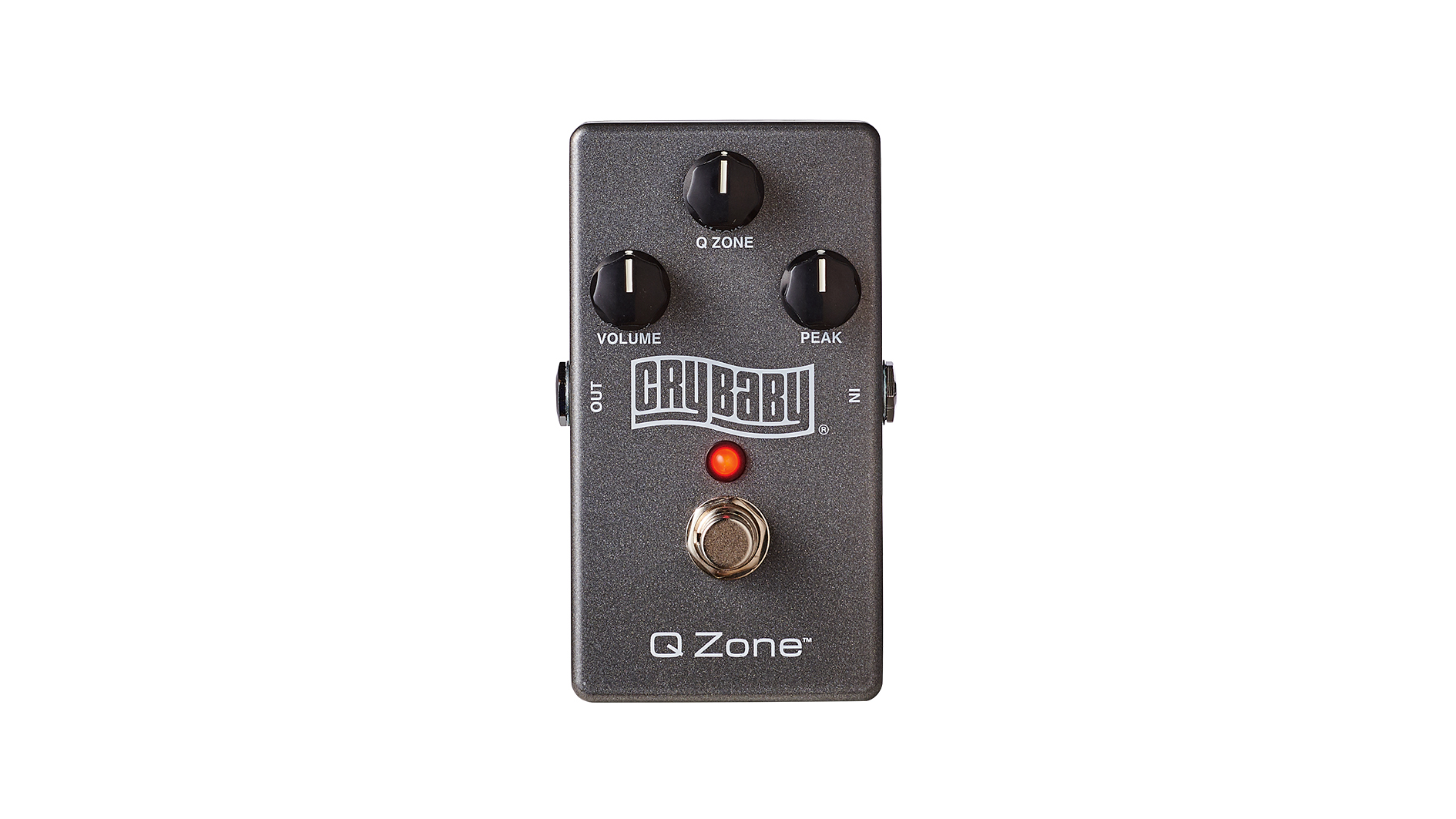Guitar World Verdict
A niche pedal maybe, but one that does its job perfectly with no worries about treadle positioning.
Pros
- +
Fixed position wah offers a pleasing tonal shift to your sound.
- +
Q Zone knob allows you to set the bandpass shape.
Cons
- -
The inability to dynamically alter the wah might not be for everybody.
You can trust Guitar World
Back in original three-knob guise after the four-knob CSP030 Custom Shop version, the Q Zone mimics a ‘cocked wah’ - the sound of a wah pedal held in a fixed position, a favored technique of many players to give a tonal shift to their sound, typically a resonant treble boost for enhanced harmonic content.
The volume knob has plenty extra to drive your amp if you want to incorporate a boost, while the Peak control has the same function as the rocker pot of a wah pedal, setting the centre frequency and essentially mimicking the treadle position.
The Q Zone knob sets the bandpass shape (broad or narrow) and effectively dials in the intensity for more throatiness or quack.
Here’s an extra dimension to your sound that you wouldn’t get with basic EQ, and while it’s perhaps not as versatile as having a full wah pedal on your ’board, it takes up much less space and lets you instantly hit that sweet spot every time.
Specs

- ORIGIN: USA
- STREET PRICE: £159
- TYPE: Fixed wah pedal
- FEATURES: True bypass
- CONTROLS: Volume, Q Zone, Peak, Bypass footswitch
- CONNECTIONS: Standard input, standard output
- POWER: 9V battery or 9V DC adaptor (not supplied)
- DIMENSIONS: 64 (w) x 110 (d) x 50mm (h)
Trevor Curwen has played guitar for several decades – he's also mimed it on the UK's Top of the Pops. Much of his working life, though, has been spent behind the mixing desk, during which time he has built up a solid collection of the guitars, amps and pedals needed to cover just about any studio session. He writes pedal reviews for Guitarist and has contributed to Total Guitar, MusicRadar and Future Music among others.
“The original Jordan Boss Tone was probably used by four out of five garage bands in the late ’60s”: Unpacking the gnarly magic of the Jordan Boss Tone – an actual guitar plug-in that delivers Dan Auerbach-approved fuzz
“This is a powerhouse of a stompbox that manages to keep things simple while offering endless inspiration”: Strymon EC-1 Single Head dTape Echo pedal review












